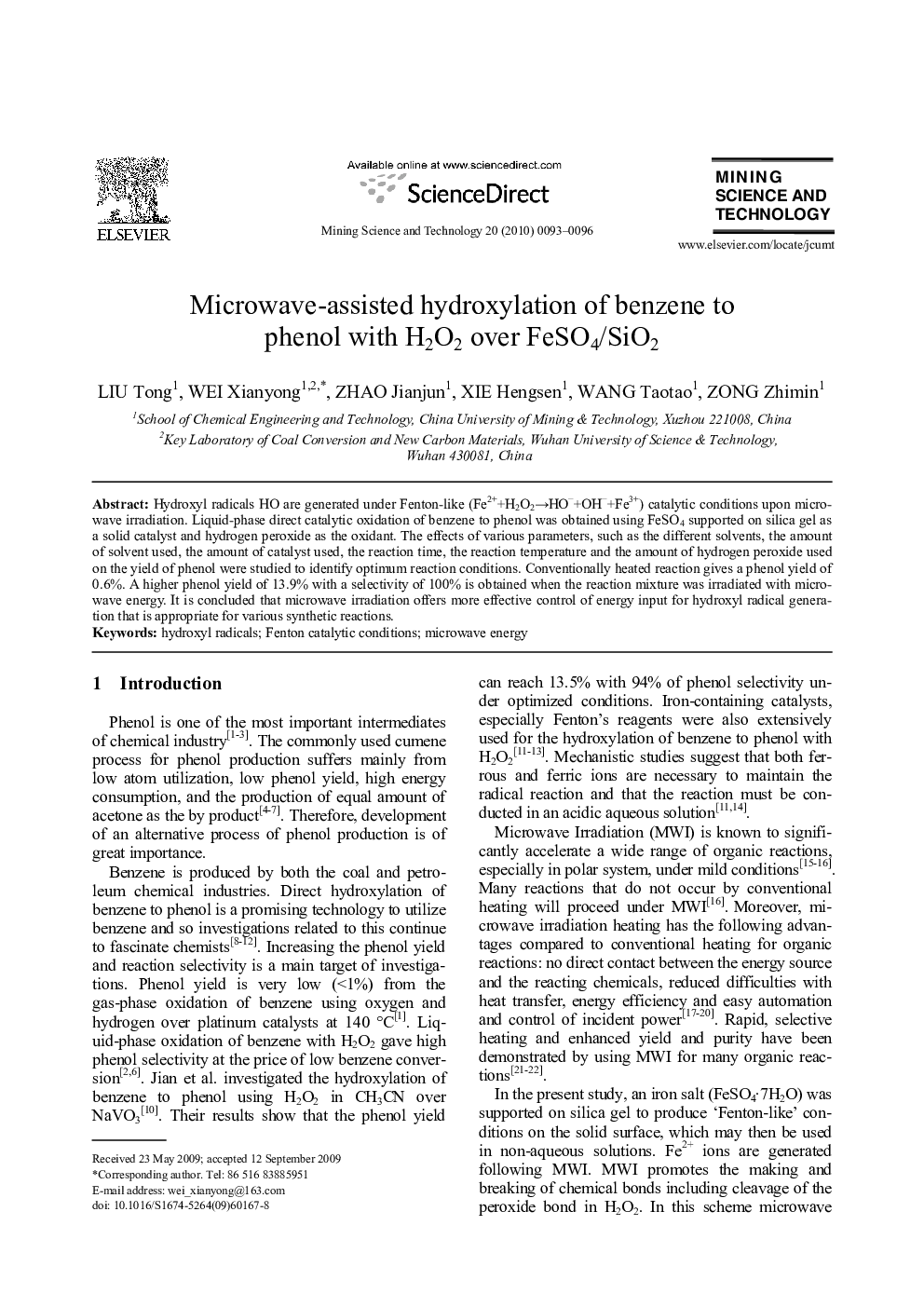| Article ID | Journal | Published Year | Pages | File Type |
|---|---|---|---|---|
| 294776 | Mining Science and Technology (China) | 2010 | 4 Pages |
Hydroxyl radicals HO are generated under Fenton-like (Fe2++H2O2→HO−+OH−+Fe3+) catalytic conditions upon microwave irradiation. Liquid-phase direct catalytic oxidation of benzene to phenol was obtained using FeSO4 supported on silica gel as a solid catalyst and hydrogen peroxide as the oxidant. The effects of various parameters, such as the different solvents, the amount of solvent used, the amount of catalyst used, the reaction time, the reaction temperature and the amount of hydrogen peroxide used on the yield of phenol were studied to identify optimum reaction conditions. Conventionally heated reaction gives a phenol yield of 0.6%. A higher phenol yield of 13.9% with a selectivity of 100% is obtained when the reaction mixture was irradiated with microwave energy. It is concluded that microwave irradiation offers more effective control of energy input for hydroxyl radical generation that is appropriate for various synthetic reactions.
